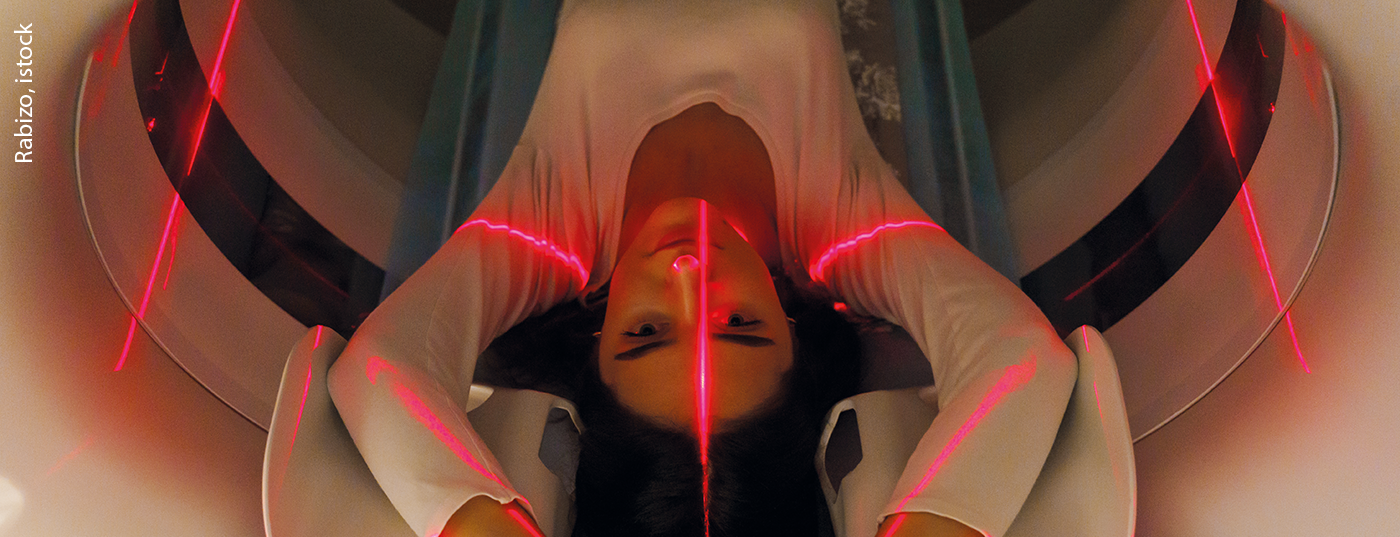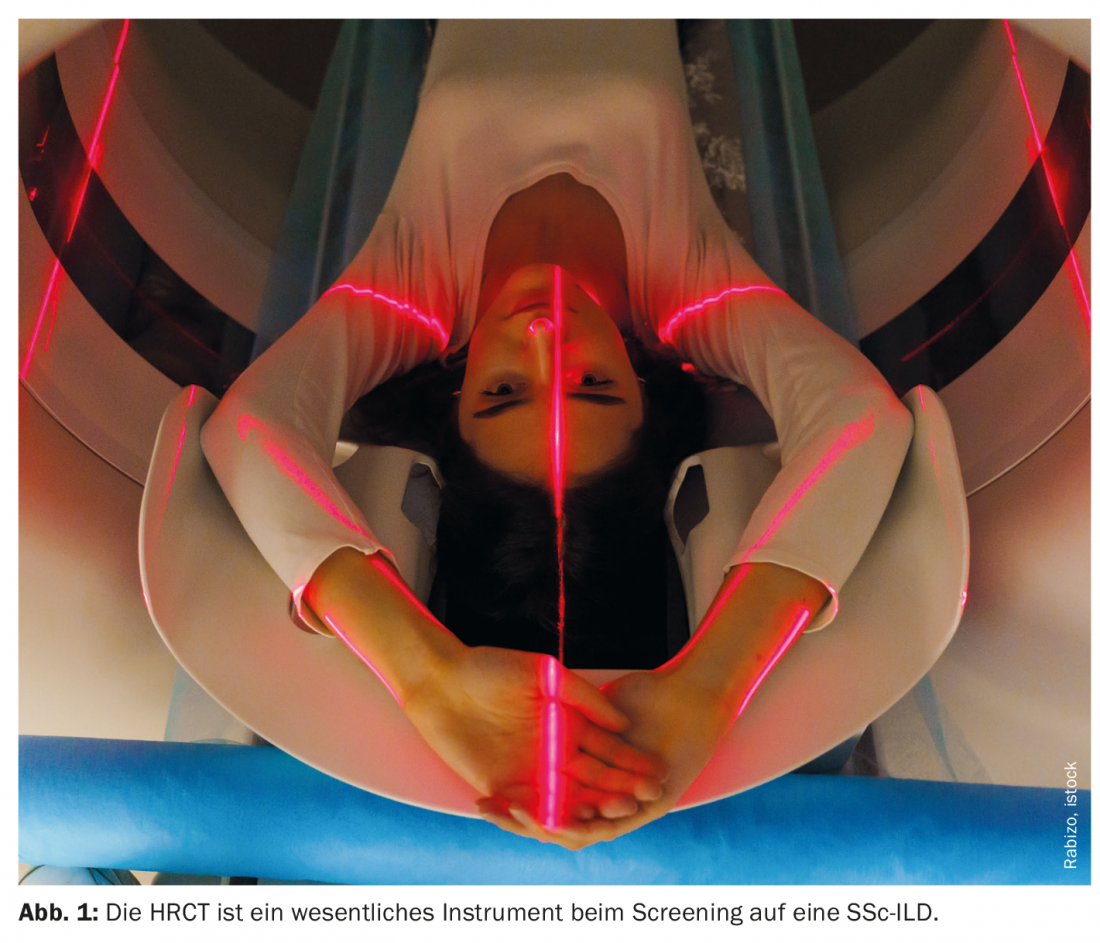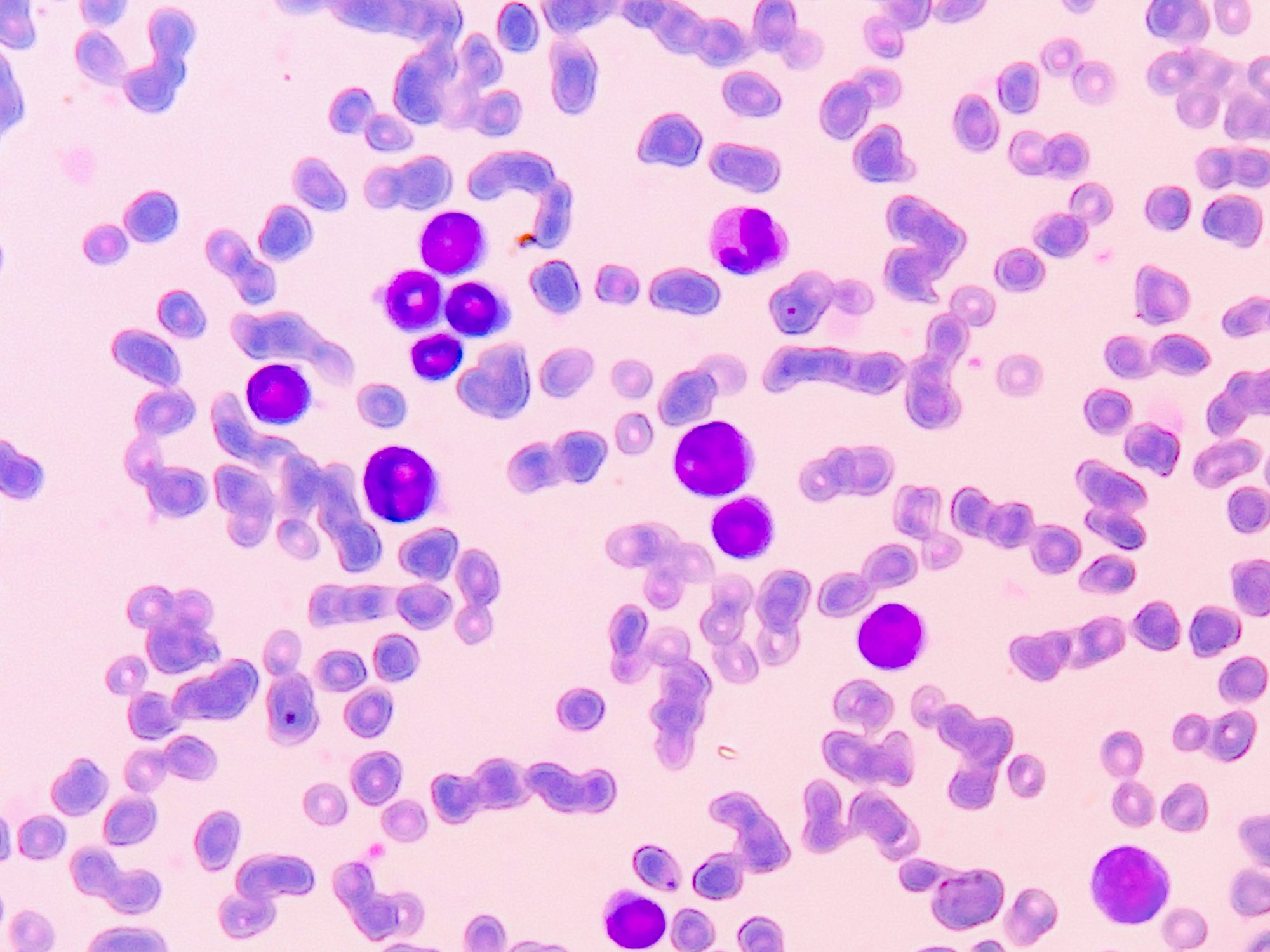Interstitial lung disease (ILD) is a common organ manifestation in patients with systemic sclerosis (SSc). It is considered a major cause of morbidity and mortality here. Early diagnosis and initiation of therapy for affected patients are therefore all the more important. But early detection of SSc-ILD is proving difficult, and long-term, effective treatment options are scarce.
Because symptoms are usually subclinical, SSc-ILD is often not diagnosed until advanced disease stages. Evidence-based guidelines for screening and early detection are scarce, as is scientific information to guide treatment decisions. Current treatment approaches mostly focus on targeting inflammatory pathways with immunosuppressive therapy. In practice, the initiation of treatment often depends on the presence of factors related to either the expected progression of lung disease or the severity of the underlying disease.
Researchers led by Dr. Anna-Maria Hoffmann-Vold from the Department of Rheumatology at Rikshospitalet in Oslo have compiled the scientific literature on this topic to find decision support tools for screening, management and monitoring of disease progression in patients diagnosed with SSc-ILD [1]. The results of the study formed the basis for an evidence-based consensus statement on the identification and treatment of SSc-ILD. Out of 708 full-text publications, 280 were considered suitable for review and included. The majority of the studies (n=237) were based on observational studies.
Risk factors, screening and diagnosis
Risk factors that might be associated with the presence, severity, and progression of SSc-ILD were sought. High evidence was found for an association between diffuse skin involvement and ILD. In addition, there is evidence, albeit of moderate quality, that anti-centromere (ACA) and anti-topoisomerase I (ATA) antibody statuses are risk factors for ILD, with ACA being protective against ILD and ATA increasing the likelihood of the presence of SSc-ILD.
Moderate-quality evidence was found by the research team that pulmonary function tests (including FVC andDLCO) in combination with high-resolution computed tomography (HRCT) may be useful in screening for SSc-ILD. However, it remains unclear from the data when the optimal time for screening should be. Also moderate evidence was identified for lung ultrasound as a potential tool to detect the presence of ILD in patients with SSc.
In the Scleroderma Lung Study (SLS) I, the extent of ILD defined by HRCT was a predictor of FVC decline. In addition, pulmonary function tests (PFTs), including FVC andDLCO, were used as surrogate measures to assess the presence and severity of SSc-ILD at baseline. Frequent cough correlates with the presence and severity of SSc-ILD.
Therapy options
Treatment of SSc-ILD is challenging due to the clinical complexity and heterogeneity of the disease. Immunosuppressants (monotherapy and combination) were predominantly used for treatment in the sources studied. However, there was no evidence or recommendations on when and how to increase doses. High quality evidence was demonstrated for cyclophosphamide (CYC). SLS I reported that treatment with CYC improved lung function compared with placebo in patients with SSc-ILD at 1 year. The results of the review for CYC are consistent with recommendations from the European League Against Rheumatism (EULAR) for the treatment of patients with SSc who suffer from pulmonary disease. Another study showed a trend toward increased efficacy of low-dose prednisolone and intravenous CYC followed by oral azathioprine compared with placebo.
Moderate-quality evidence was also available for treatment with mycophenolate mofetil (MMF). In the SLS II trial, it was found that treatment with CYC for 1 year or MMF for 2 years resulted in significant improvements in predefined measures of lung function, pulmonary imaging, dyspnea, and skin disease. MMF was more tolerable and less toxic, but this study failed to meet its primary endpoint of superiority of 2 years of treatment with MMF over 1 year of treatment with CYC; no other RCTs exist for MMF. These data support the efficacy of both treatments for progressive SSc-ILD and the current preference for MMF because it is more tolerable and associated with fewer side effects, the authors write.
Hematopoietic stem cell transplantation should be considered for the treatment of carefully selected patients with rapidly progressive SSc who are at risk of organ failure. Improvements in FVC were observed during a 2-year follow-up. However, in one study, the adverse event rate was 43% and included two (14%) patients with severe cardiomyopathy, one of whom was fatal (high evidence).
Nintedanib and tocilizumab with Benefit
To date, no randomized, placebo-controlled trials have been conducted to evaluate rituximab in SSc-ILD. Observational and uncontrolled studies have shown that rituximab may benefit patients with SSc-ILD by preventing a decline in lung function, making it a potential future treatment option.
After the review was completed, additional data were published regarding the agents nintedanib and tocilizumab. Results from the SENSCIS trial showed that nintedanib is an effective treatment option for patients with SSc-ILD. The compound is now approved in the U.S. and Europe for the treatment of patients with SSc-ILD. The phase 2 and phase 3 faSScinate and focuSSed trials, respectively, evaluating tocilizumab for the treatment of early inflammatory diffuse cutaneous SSc showed that it had a positive impact on ILD disease progression as measured by FVC decline and HRCT, although focuSSed did not meet its primary endpoint (the modified Rodnan skin score). Nintedanib and tocilizumab were both included in the investigators’ consensus statements based on these results.
Their systematic review underscored the lack of high-quality evidence for guidelines or recommendations for treatment algorithms and therapy selection for patients with SSc-ILD, Dr. Hoffmann-Vold and colleagues conclude. He said there is a need for further clinical research to evaluate alternative safe and effective treatment options for patients with SSc-ILD.
Literature:
- Hoffmann-Vold AM, et al: Assessment of recent evidence for the management of patients with systemic sclerosis-associated interstitial lung disease: a systematic review. ERJ Open Res 2021; doi: 10.1183/23120541.00235-2020.
InFo PAIN & GERIATry 2021; 3(1): 43-44.













